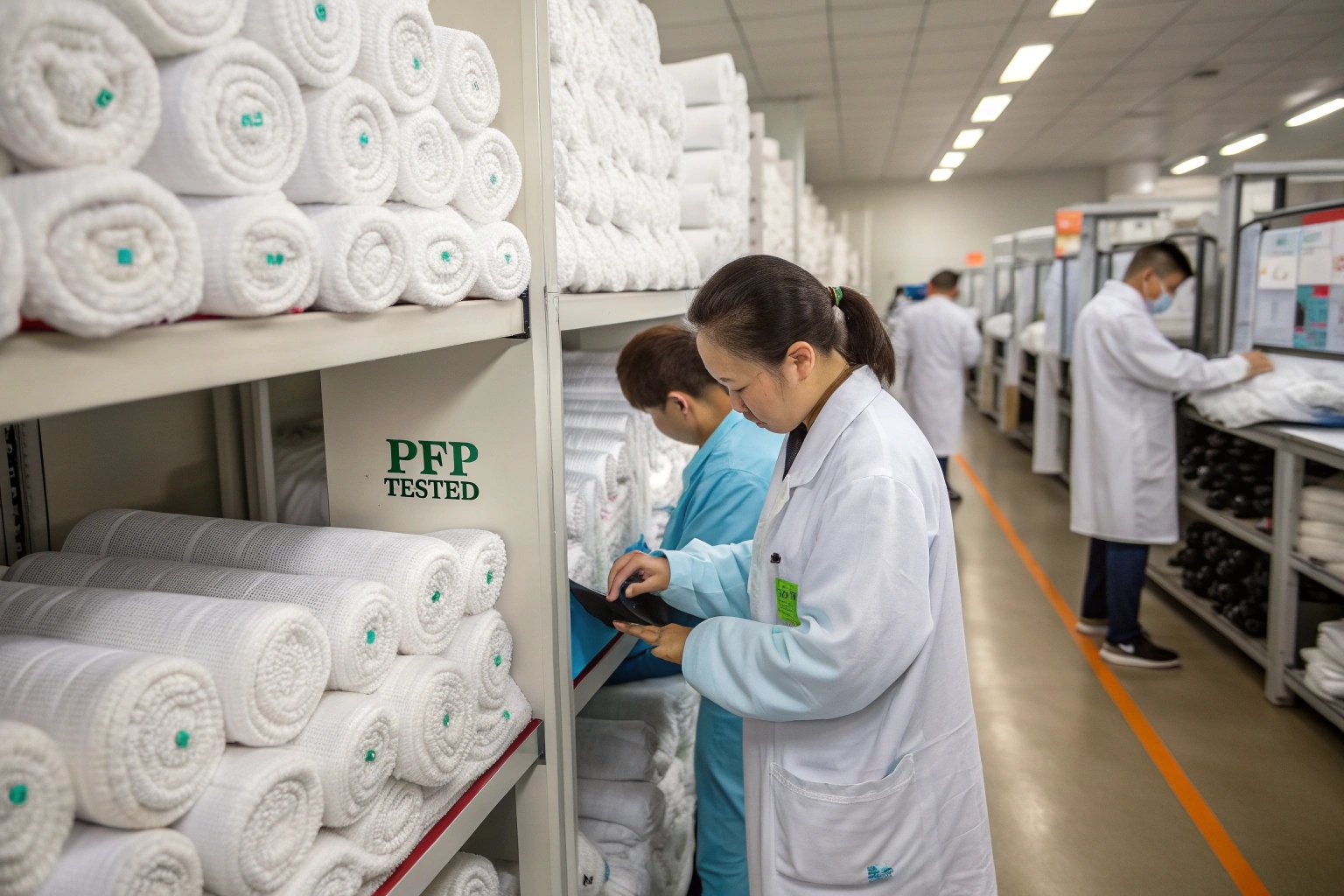When it comes to children's clothing—especially sleepwear—safety is not negotiable. Parents expect softness and comfort, but hidden dangers like flammability, chemical residues, and dye reactivity can turn an innocent fabric into a serious risk. One overlooked but essential safety requirement is PFP testing.
PFP testing (Prepared For Print) is critical for children’s sleepwear fabrics because it ensures the material can accept safe, regulated printing while maintaining flammability compliance, color durability, and chemical integrity during production.
At Fumao Fabric, we partner with babywear and children’s apparel brands across the U.S. and Europe. These buyers demand that every yard of fabric meets ASTM and EU flammability standards before any print is applied—and that’s where PFP preparation and testing come in.
What Does PFP Mean in Textile Sourcing?
“PFP” stands for Prepared For Print—a specific fabric state achieved through pre-treatment processes like scouring, bleaching, and softening. This treatment ensures that the fabric surface is chemically clean and ready for color to adhere evenly.
In children’s sleepwear, PFP-treated fabrics are a must-have before applying regulated prints, as untreated fabrics may resist dye penetration, react unpredictably, or fail fire safety tests.
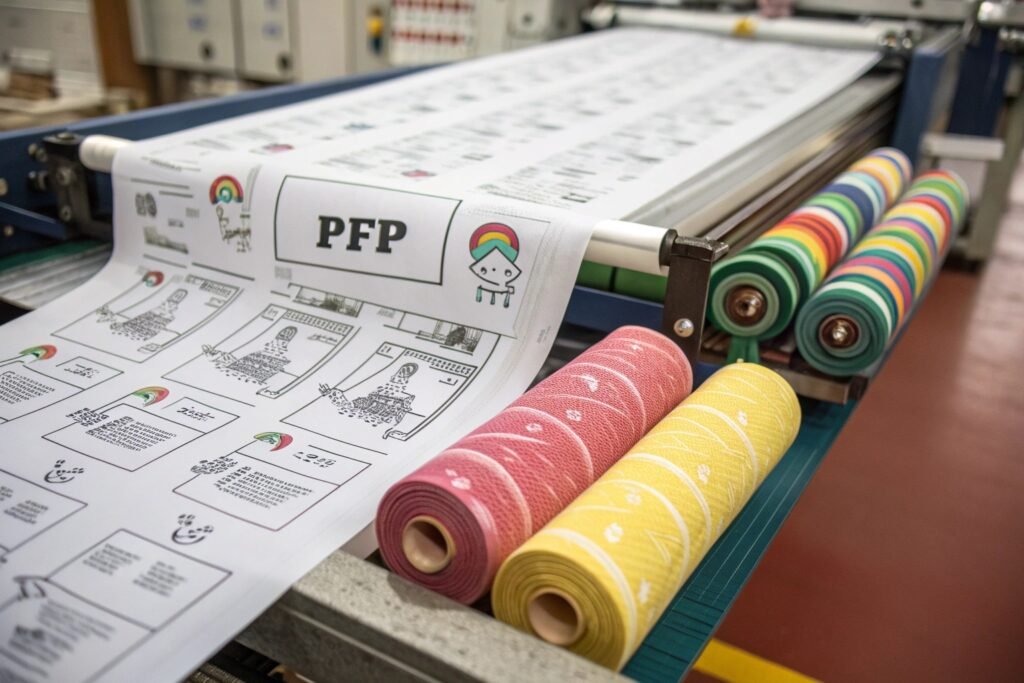
What’s Included in the PFP Preparation Process?
PFP includes:
- Desizing – removes weaving lubricants
- Scouring – removes natural waxes, oils
- Bleaching – brightens the fabric for printing
- Softening – improves hand feel
- pH balancing – ensures reactive dye compatibility
Our PFP processing partners follow AATCC guidelines and often align with OEKO-TEX® limits on residual chemicals to make fabrics safe for infants.
How Is PFP Different from RFD?
“RFD” (Ready For Dyeing) fabrics are pre-treated for solid dyeing but may not be optimized for precision printing. PFP fabrics, on the other hand, undergo more intense surface treatments, making them ideal for rotary and digital printing with reactive, pigment, or disperse inks—particularly on cotton and cotton blends.
Why Is PFP Testing Mandatory for Children’s Sleepwear Safety?
Children’s sleepwear sold in the U.S. must comply with the CPSC flammability standards (16 CFR Parts 1615/1616). Fabrics that haven’t been PFP-processed or tested may shrink, ignite faster, or shed finishes that impact flammability.
PFP testing is required to confirm that once printing is applied, the fabric still maintains its flammability resistance, dimensional stability, and chemical safety for infant skin contact.
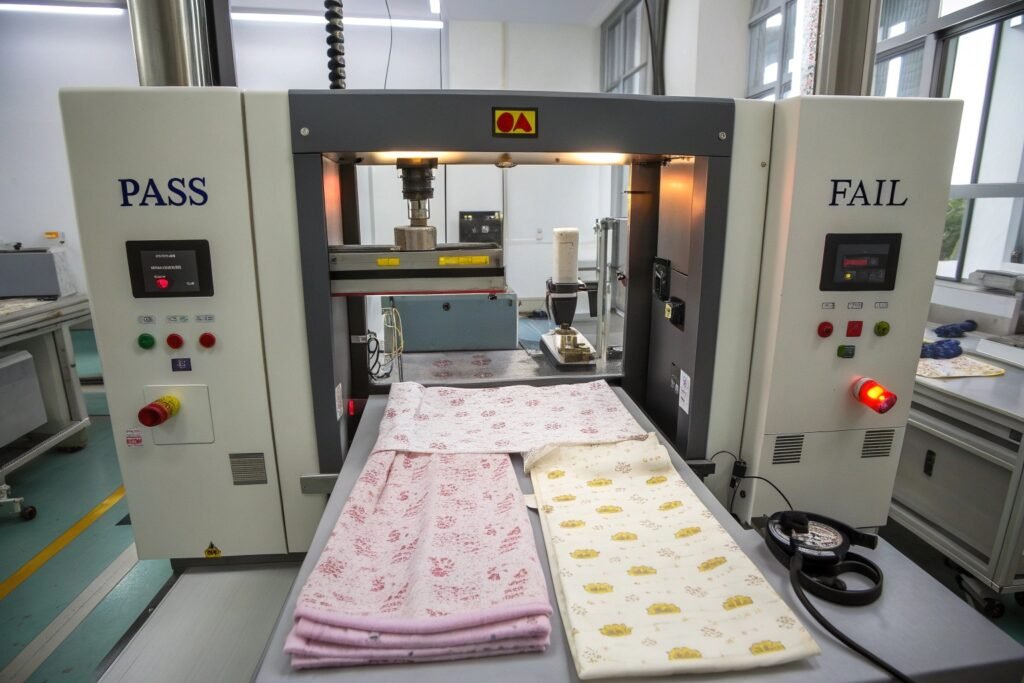
What Flammability Standards Apply?
- 16 CFR 1615/1616 – U.S. federal regulations for children's sleepwear flammability
- BS EN 14878 – EU standard for nightwear safety
- ASTM D1230 – Flammability of textiles
- NFPA 701 – Optional testing for flame retardancy in treated sleepwear
All prints, finishes, and coatings must not interfere with flame spread resistance. PFP testing ensures compatibility before those prints are applied.
What Happens If You Skip PFP Testing?
Without PFP testing:
- Fabric may fail flammability after printing
- Colors may bleed, fade, or become toxic after heat
- Print chemicals may interact dangerously with existing finishes
- Buyers may face product recalls, legal penalties, or damaged brand trust
We’ve helped several babywear startups catch this early—saving them from costly relabeling and shipment rejection at customs.
What Testing Methods Are Used to Evaluate PFP Fabrics?
Before a fabric is declared “PFP-certified,” it must undergo a combination of physical, chemical, and surface-energy tests.
The main tests for PFP fabrics include absorbency rate, surface wettability, flammability pre/post print, shrinkage behavior, and pH neutrality for skin safety.
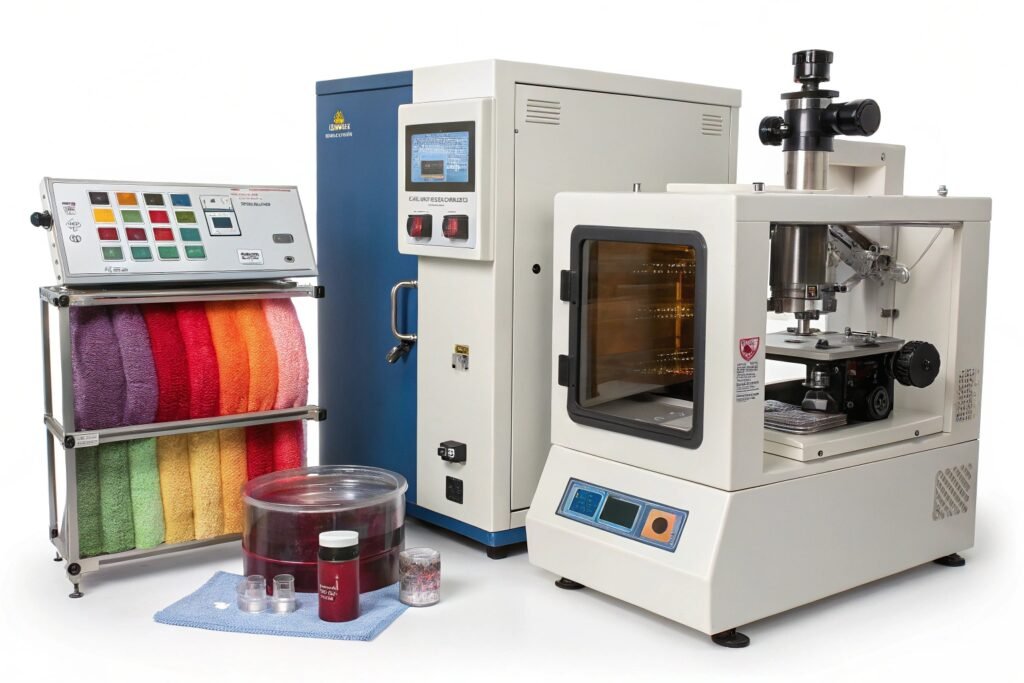
What Are the Most Common Tests?
- Vertical flammability test (16 CFR 1615/1616)
- Drop test (to check for liquid absorbency rate)
- Wettability test (AATCC 79)
- Colorfastness (ISO 105-C06 / AATCC 61)
- pH of aqueous extract (ISO 3071)
Our CNAS-accredited lab performs these tests and assigns QR-coded traceability labels to each lot. These allow our clients to show compliance documentation on demand.
Can You Print on Fabrics Without PFP?
Technically yes, but results vary. Many pigment-printed fabrics without PFP look washed-out, flake after heat curing, or produce uneven colors. Worse, the post-print process might introduce chemicals that breach CPSIA regulations.
How to Source Pre-Tested PFP Fabrics for Babywear Production?
Buyers need not treat PFP as a risky trial. Reputable fabric suppliers offer PFP-processed rolls that have already passed baseline safety tests—making it easier to scale print production with confidence.
At Fumao Fabric, we supply OEKO-TEX® Standard 100-certified PFP fabrics with flammability pre-screening and colorfastness guarantees, ready for babywear printing and export.
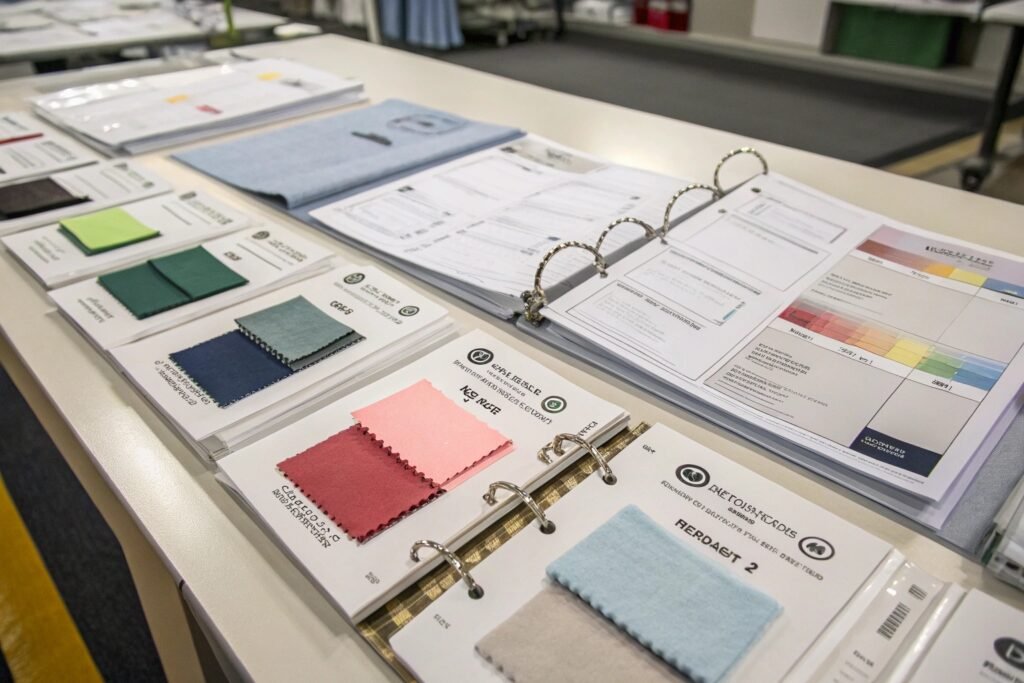
What MOQ and Lead Time Apply?
- MOQ: 300–500 meters per color (depending on GSM & weave)
- Lead time: 10–14 days for lab dip + PFP treatment
- Available: 100% cotton, cotton/spandex, Tencel™, bamboo rayon
We also offer custom GSM options from 140g to 220g for pajamas, rompers, and baby swaddles, as well as free A4 swatch kits for safety testing review.
How to Request Verification for Flammability Compliance?
Ask for:
- PFP test report PDF (includes date, lab, methods)
- Flammability certificate (16 CFR 1615/1616 or EN 14878)
- Colorfastness to saliva and perspiration
- QR or barcode on rolls for traceability
Some of our U.S. clients upload these to CPSC’s online compliance portal as part of their brand registration.
Conclusion
PFP testing is not just about print quality—it’s about child safety. From flammability resistance to dye compatibility, every factor in children’s sleepwear must be controlled. Unprepared fabrics can become dangerous after printing, risking not only product recalls but the trust of every parent.
As a textile supplier committed to safe and sustainable production, Fumao Fabric helps you navigate the full compliance landscape with PFP-tested fabrics, ready for regulated markets. When it comes to children’s sleepwear, preparation isn’t optional—it’s protection.

